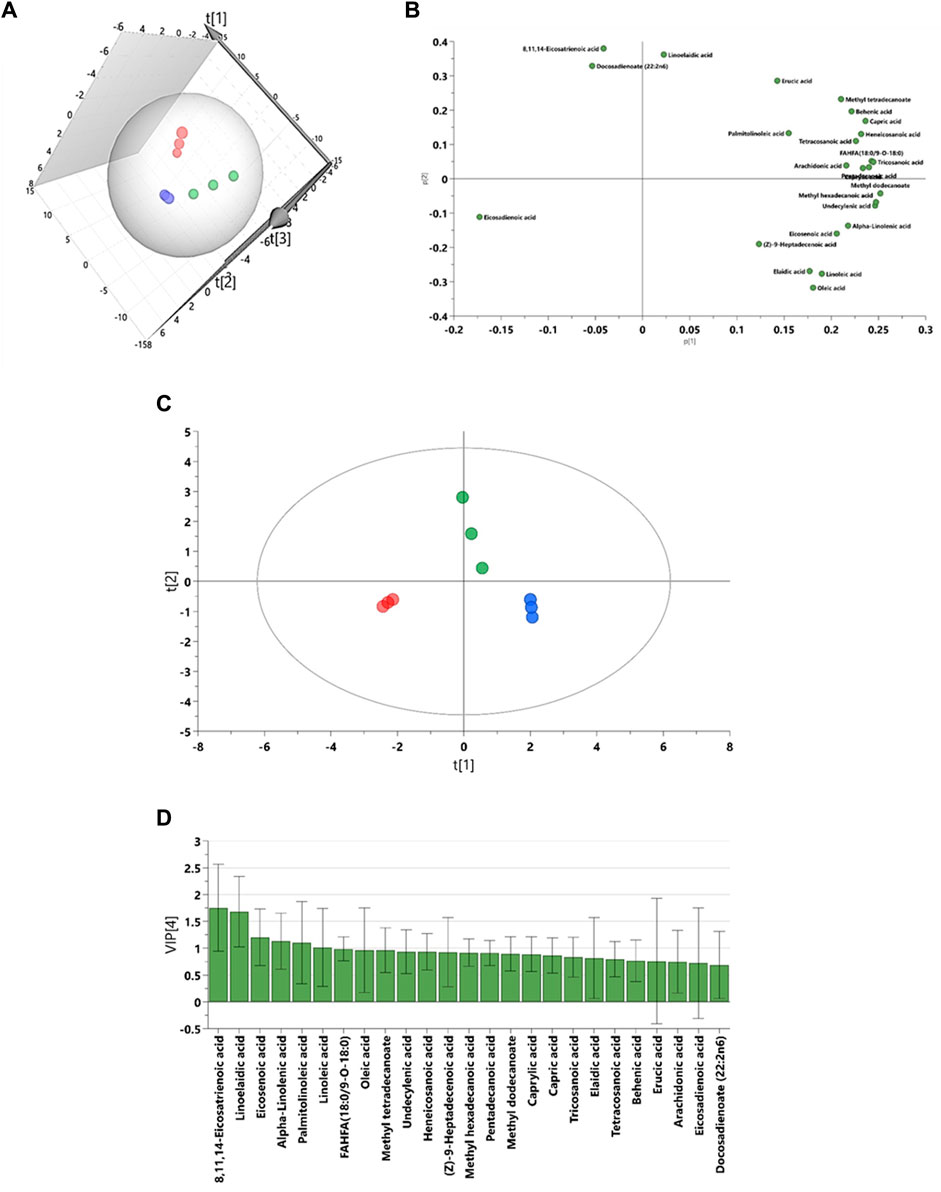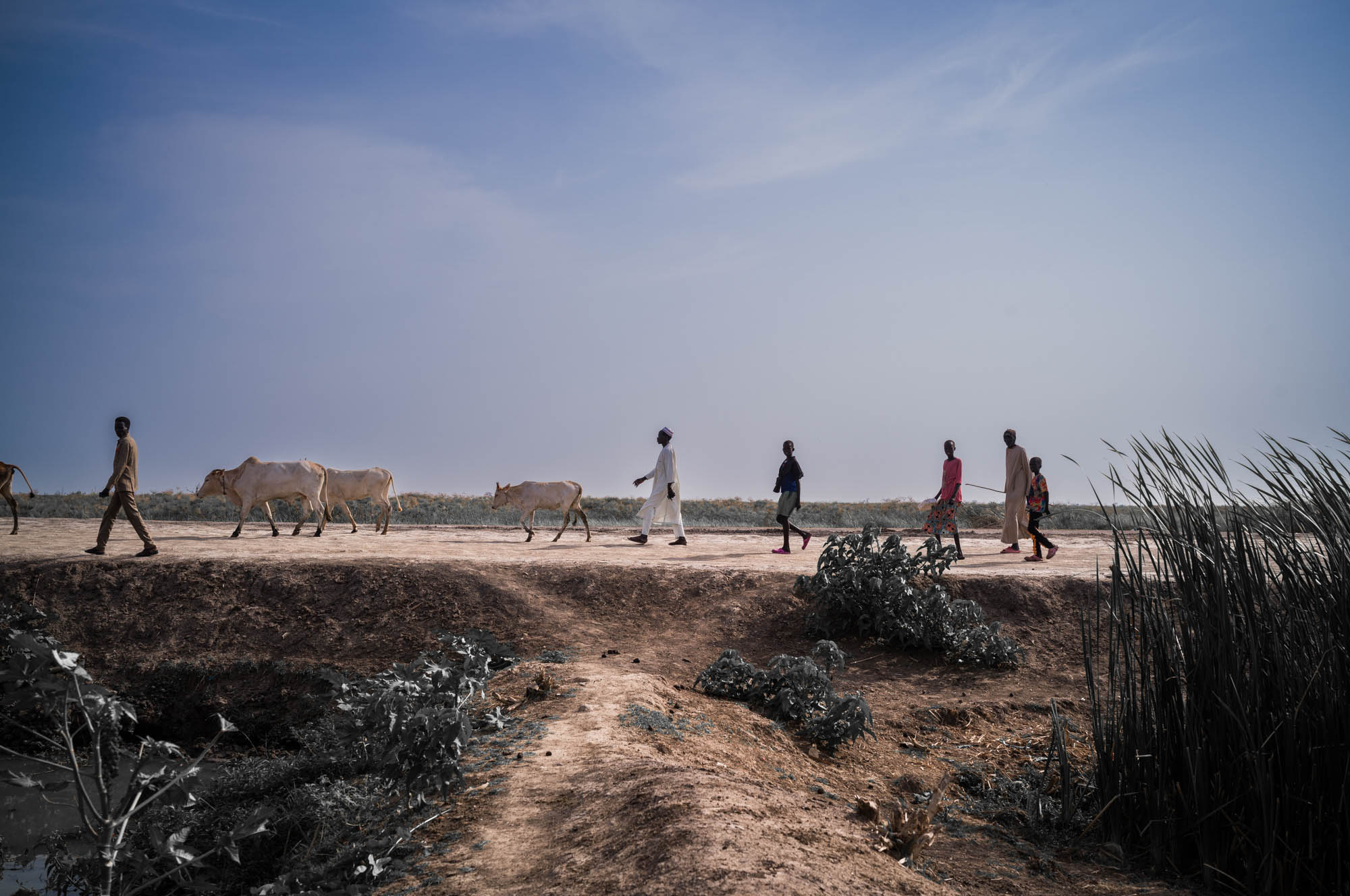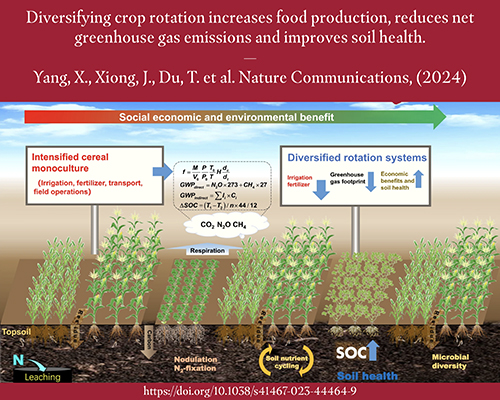Report on a Novel Bias Correction Method for Global Climate Models to Support Sustainable Development Goals
Executive Summary
Global Climate Models (GCMs) are fundamental for projecting future climate scenarios, yet their inherent biases, particularly in representing extreme events and the relationships between different climate variables, limit their direct application in impact assessments. This limitation poses a significant challenge to achieving the Sustainable Development Goals (SDGs), which rely on accurate climate information for effective planning and action. This report details a novel bias correction (BC) method, Complete Density Correction using Normalizing Flows (CDC-NF), which leverages deep learning to adjust the full joint distribution of GCM outputs. Applied to daily precipitation and maximum temperature data from CMIP6 GCMs, the CDC-NF method demonstrates substantial improvements over traditional techniques like quantile mapping. Key performance indicators, including Wasserstein Distance, RMSE, and PBIAS, show marked enhancement, especially for extreme events (90th percentile). Crucially, CDC-NF preserves the cross-correlation structure between variables, which is vital for modeling compound extremes (e.g., concurrent heatwaves and droughts). This advancement provides a more robust framework for climate impact studies, directly supporting evidence-based strategies for SDG 13 (Climate Action), SDG 2 (Zero Hunger), SDG 6 (Clean Water and Sanitation), and SDG 11 (Sustainable Cities and Communities).
1.0 Introduction: The Need for Reliable Climate Data in Achieving the SDGs
The successful implementation of the United Nations Sustainable Development Goals is intrinsically linked to our ability to understand and adapt to climate change. GCMs are the primary tools for this purpose, but systematic biases in their outputs can lead to inaccurate risk assessments and misinformed adaptation strategies, undermining progress towards the SDGs.
1.1 Challenges in GCMs and Implications for Sustainable Development
Standard GCM outputs often fail to accurately represent local climate conditions and, most critically, the complex interplay between different climate variables. This is a major obstacle for several SDGs:
- SDG 13 (Climate Action): Effective climate action requires precise projections of climate hazards. Biased models can underestimate the frequency and intensity of extreme events, leading to inadequate adaptation measures.
- SDG 2 (Zero Hunger): Agricultural productivity is highly sensitive to the joint occurrence of temperature and precipitation extremes. Traditional bias correction methods that fail to preserve these relationships cannot reliably inform strategies for food security.
- SDG 6 (Clean Water and Sanitation): The management of water resources depends on accurate hydrological modeling, which requires correct inputs for precipitation and temperature. Inaccurate GCM data can lead to poor management of floods, droughts, and water supply systems.
- SDG 11 (Sustainable Cities and Communities): Building resilient infrastructure and protecting urban populations from climate-related disasters necessitates reliable data on compound events, such as intense rainfall during heatwaves, which are poorly captured by biased models.
1.2 Limitations of Conventional Bias Correction
Traditional BC methods, such as quantile mapping, operate on single variables (univariate). While they can adjust the marginal distribution of a variable like temperature, they often distort or destroy the statistical relationship it has with other variables, such as precipitation. This failure to correct the joint distribution makes them unsuitable for studies of compound events, which are of increasing concern for achieving SDG targets.
2.0 Methodology: Complete Density Correction using Normalizing Flows (CDC-NF)
To overcome the limitations of existing methods, a novel approach using Normalizing Flows (NF), a class of deep learning models, was developed. The CDC-NF method corrects the complete joint probability density of multiple climate variables simultaneously, ensuring that their interdependencies are preserved.
2.1 The Normalizing Flow Framework
Normalizing Flows transform a simple probability distribution (e.g., a standard normal distribution) into a complex, target distribution (e.g., the observed joint distribution of temperature and precipitation) through a series of invertible and differentiable mathematical mappings. By learning these transformations, the model can map GCM data into a corrected space that aligns with the full statistical structure of the observed climate.
2.2 Implementation Steps for GCM Correction
The CDC-NF method was applied to correct daily maximum temperature and precipitation outputs from CMIP6 models against the NOAA nClimGrid-daily observational dataset. The process involved the following key steps:
- Model Training: The NF model was trained on historical observational data to learn the invertible mapping that transforms a simple base distribution into the complex joint distribution of observed precipitation and temperature. The model’s parameters were optimized by maximizing the joint likelihood of the observed data.
- Backward Transformation: Raw GCM data were first mapped into the base distribution space using the learned inverse transformations.
- Forward Transformation: The data were then transformed from the base distribution space into the corrected, observed data space using the forward transformations. This step aligns the GCM data with the observed joint distribution, resulting in bias-corrected outputs that preserve cross-variable dependencies.
- Evaluation: The performance of the CDC-NF method was rigorously evaluated against traditional methods (Quantile Mapping and Canonical Correlation Analysis) using an independent validation period (2008–2014).
3.0 Technical Validation and Performance
The CDC-NF method was validated through a comprehensive comparison with established BC techniques, focusing on metrics relevant to climate impact assessment and the SDGs.
3.1 Key Findings
- Superior Distributional Alignment: The CDC-NF method demonstrated significantly lower Wasserstein Distance (WD) values for both precipitation and temperature across the entire United States, indicating a much closer match to the observed probability distributions compared to other methods.
- Improved Accuracy for Extremes: For the 90th percentile of both precipitation and temperature, CDC-NF showed lower RMSE and PBIAS values. This enhanced performance in capturing the tails of the distribution is critical for assessing risks related to extreme weather events, a core component of SDG 13.
- Preservation of Joint Dependencies: The most significant advantage of CDC-NF is its ability to preserve the cross-correlation between precipitation and temperature. While other methods showed high bias in this metric, NF achieved a PBIAS of just -1.43, confirming its capacity to model the joint behavior required for analyzing compound events relevant to SDG 2, SDG 6, and SDG 11.
3.2 Quality Assurance of the CDC-NF Dataset
The resulting dataset underwent extensive quality assurance checks to ensure its integrity and reliability for use in climate impact studies.
- Monthly Distribution Comparison: Verified that corrected data preserve realistic monthly climate patterns and statistical properties.
- Preservation of Joint Behavior: Confirmed that the interdependencies between temperature and precipitation were maintained after correction using two-dimensional Wasserstein distance.
- Extreme Events and Tail Dependence: Performed tail dependence analysis to ensure that co-occurring extremes (e.g., heavy rainfall on hot days) are realistically captured.
- Data Integrity Checks: Applied routines to identify and correct anomalies, such as physically impossible values.
4.0 Data Record and Usage Notes
4.1 Dataset Description
A state-of-the-art dataset, CDC-NF, has been produced, providing complete density-corrected daily precipitation and maximum temperature data for five CMIP6 GCMs (MRI-ESM2-0, MPI-ESM1-2-HR, ACCESS-CM2, GFDL-ESM4, and NorESM2-LM). The data cover the historical period (1951–2014) and are available in NetCDF format.
4.2 Availability
The bias-corrected data are publicly available through figshare at: https://figshare.com/articles/dataset/GCM_biascorrected/27976818. The code used to perform the analysis is available on GitHub.
5.0 Conclusion: Advancing Climate Science for Global Sustainability
The CDC-NF method represents a significant advancement in the field of climate model bias correction. By correcting the full joint distribution of climate variables, it addresses a critical weakness of traditional methods and provides more reliable data for assessing the risks of extreme and compound climate events. The resulting CDC-NF dataset is a valuable resource for researchers, policymakers, and practitioners working to build resilience and advance the Sustainable Development Goals. This improved scientific foundation enables more accurate impact assessments for agriculture, water resources, and urban systems, thereby supporting the development of more effective adaptation strategies to combat climate change and its impacts.
Analysis of Sustainable Development Goals (SDGs) in the Article
1. Which SDGs are addressed or connected to the issues highlighted in the article?
-
SDG 13: Climate Action
This is the most central SDG to the article. The entire study focuses on improving the accuracy of Global Climate Models (GCMs) to provide better climate projections. This is fundamental for taking informed action on climate change. The article states that GCMs are “essential for climate projections” and that the proposed CDC-NF method provides a “robust framework for addressing GCM biases and improving climate impact studies in a changing climate.”
-
SDG 2: Zero Hunger
The article connects improved climate modeling to agricultural impacts. Accurate projections of precipitation and temperature are crucial for food security and developing resilient agricultural systems. The text mentions that GCM outputs are vital for “agricultural impact research” and that the relationship between precipitation and temperature affects “agricultural productivity.”
-
SDG 6: Clean Water and Sanitation
The article explicitly links climate projections to water resource management. It notes that biases in GCMs complicate “hydrological climate-change impact studies” and that understanding the relationship between climate variables is critical for “understanding hydrological processes.” This work supports the sustainable management of water resources in the face of climate change.
-
SDG 11: Sustainable Cities and Communities
The research addresses the need to better predict extreme weather and compound events, which are major threats to cities and human settlements. By improving the modeling of “compound extremes and cascading failures associated with catastrophic climate disasters,” the article contributes to building resilience and enhancing disaster preparedness in communities.
-
SDG 17: Partnerships for the Goals
The article embodies the principles of this goal by developing and sharing a new scientific method and a publicly available dataset. It introduces a “state-of-the-art database, CDC-NF” and makes the data and code available through platforms like “figshare” and “GitHub,” promoting access to technology, innovation, and reliable data for climate research.
2. What specific targets under those SDGs can be identified based on the article’s content?
-
Target 13.1: Strengthen resilience and adaptive capacity to climate-related hazards and natural disasters in all countries.
The article’s primary goal is to improve the prediction of “extreme events, such as intense precipitation, frequent heatwaves” and “compound extremes.” By providing more accurate climate projections, the research directly supports the ability to anticipate, plan for, and build resilience against climate-related hazards.
-
Target 2.4: By 2030, ensure sustainable food production systems and implement resilient agricultural practices that increase productivity and production… and strengthen capacity for adaptation to climate change, extreme weather, drought, flooding, and other disasters.
The article’s contribution to more reliable climate data for “agricultural impact research” is essential for this target. Better models of precipitation and temperature extremes help in designing agricultural systems that can withstand future climate conditions and ensure food security.
-
Target 11.5: By 2030, significantly reduce the number of deaths and the number of people affected and substantially decrease the direct economic losses… caused by disasters, including water-related disasters.
By enhancing the ability to model “cascading failures associated with catastrophic climate disasters,” the research provides critical tools for disaster risk reduction. Accurate prediction of compound events (e.g., heavy rainfall during heatwaves) allows for better planning to protect vulnerable populations and infrastructure.
-
Target 17.18: By 2020, enhance capacity-building support… to increase significantly the availability of high-quality, timely and reliable data.
The article directly contributes to this target by creating and disseminating the “CDC-NF” dataset. It describes the dataset as providing “Complete Density Correction… for CMIP6 projections” and makes it available for “widespread application in national-scale climate impact studies,” thereby increasing the availability of high-quality climate data.
3. Are there any indicators mentioned or implied in the article that can be used to measure progress towards the identified targets?
The article, being methodological, does not report on official SDG indicators but mentions and uses several performance metrics that serve as proxies for measuring progress in climate modeling, which is essential for achieving the identified targets.
-
Metrics for Model Accuracy
The article uses specific statistical metrics to validate its new method. These can be seen as indicators of our capacity to produce reliable climate information (relevant to Targets 13.1, 11.5). The article states it quantifies improvements using “Wasserstein Distance (WD), RMSE, and PBIAS.” Lower values in these metrics indicate better model performance and more reliable projections for adaptation planning.
-
Modeling of Extreme Events
An implied indicator is the ability to accurately model the tails of climate distributions. The article highlights that its method shows “substantial improvements… particularly for the 90th percentile extremes.” The accuracy of modeling the “90th quantile of daily precipitation and temperature” is a direct measure of progress in predicting the extreme events that cause disasters.
-
Modeling of Compound Events
The article emphasizes the importance of modeling the joint behavior of climate variables. An indicator for this is the preservation of “cross-correlation structure” and “tail dependence analysis between precipitation and temperature.” The article’s finding that the NF method is “superior in preserving the cross-variable correlation” is a key measure of its advanced capability to assess risks from compound events.
-
Availability of High-Quality Datasets
A direct indicator for Target 17.18 is the existence and accessibility of the dataset produced by this research. The article announces that “The bias corrected data are available through figshare” and provides a link, making the “CDC-NF” dataset a tangible output that improves data availability for the scientific community.
4. Table of SDGs, Targets, and Indicators
| SDGs | Targets | Indicators (Mentioned or Implied in the Article) |
|---|---|---|
| SDG 13: Climate Action | 13.1: Strengthen resilience and adaptive capacity to climate-related hazards and natural disasters. |
|
| SDG 2: Zero Hunger | 2.4: Ensure sustainable food production systems and implement resilient agricultural practices. |
|
| SDG 6: Clean Water and Sanitation | 6.4: Substantially increase water-use efficiency and ensure sustainable withdrawals to address water scarcity. |
|
| SDG 11: Sustainable Cities and Communities | 11.5: Significantly reduce deaths, number of people affected, and economic losses from disasters. |
|
| SDG 17: Partnerships for the Goals | 17.18: Increase the availability of high-quality, timely and reliable data. |
|
Source: nature.com







